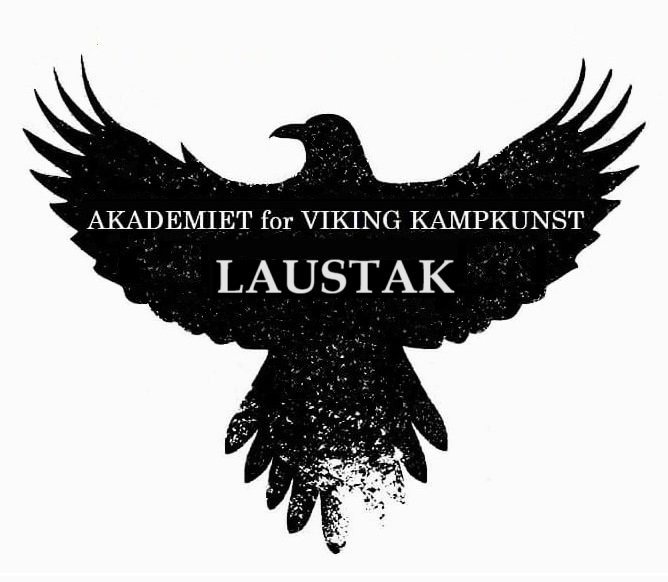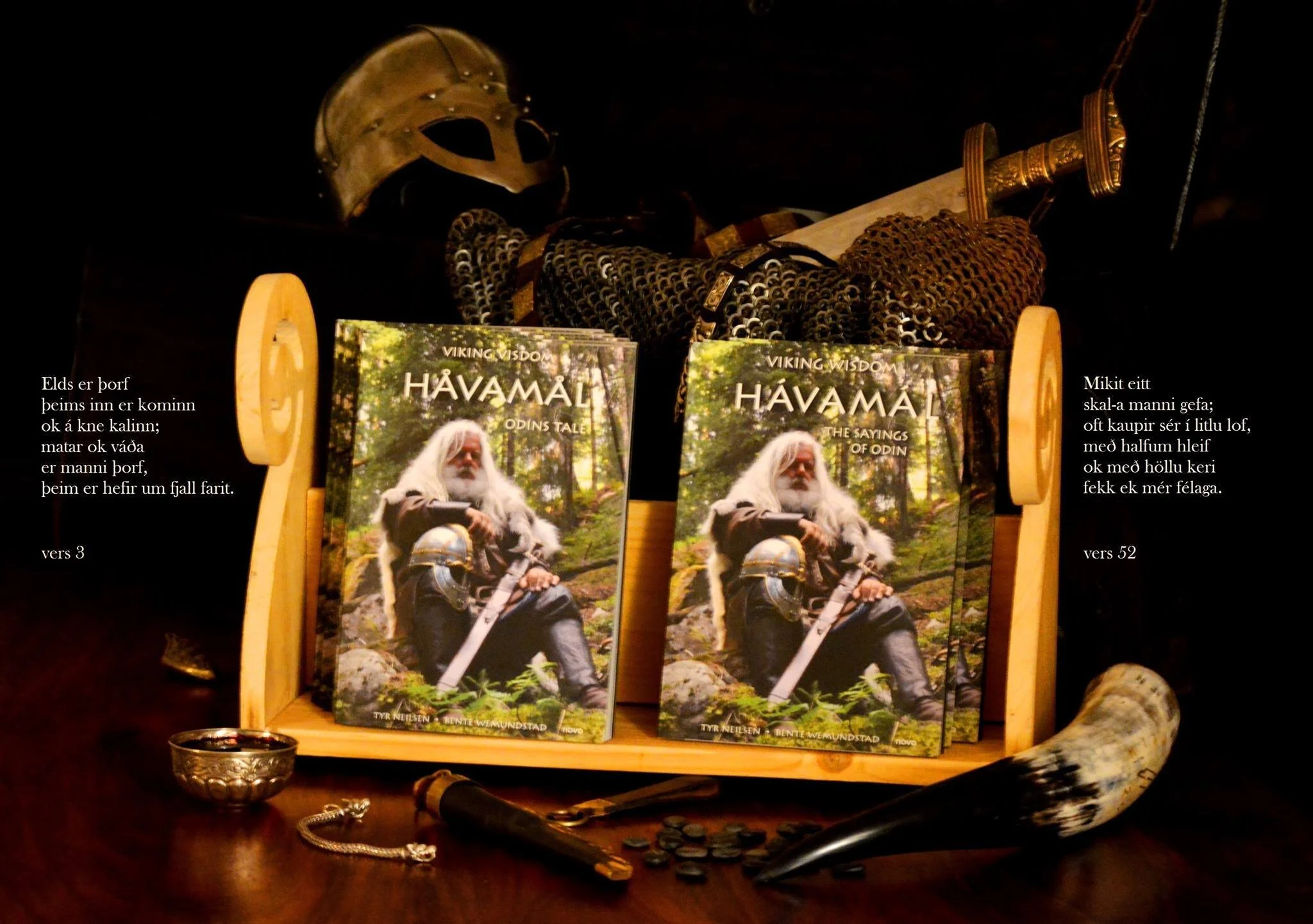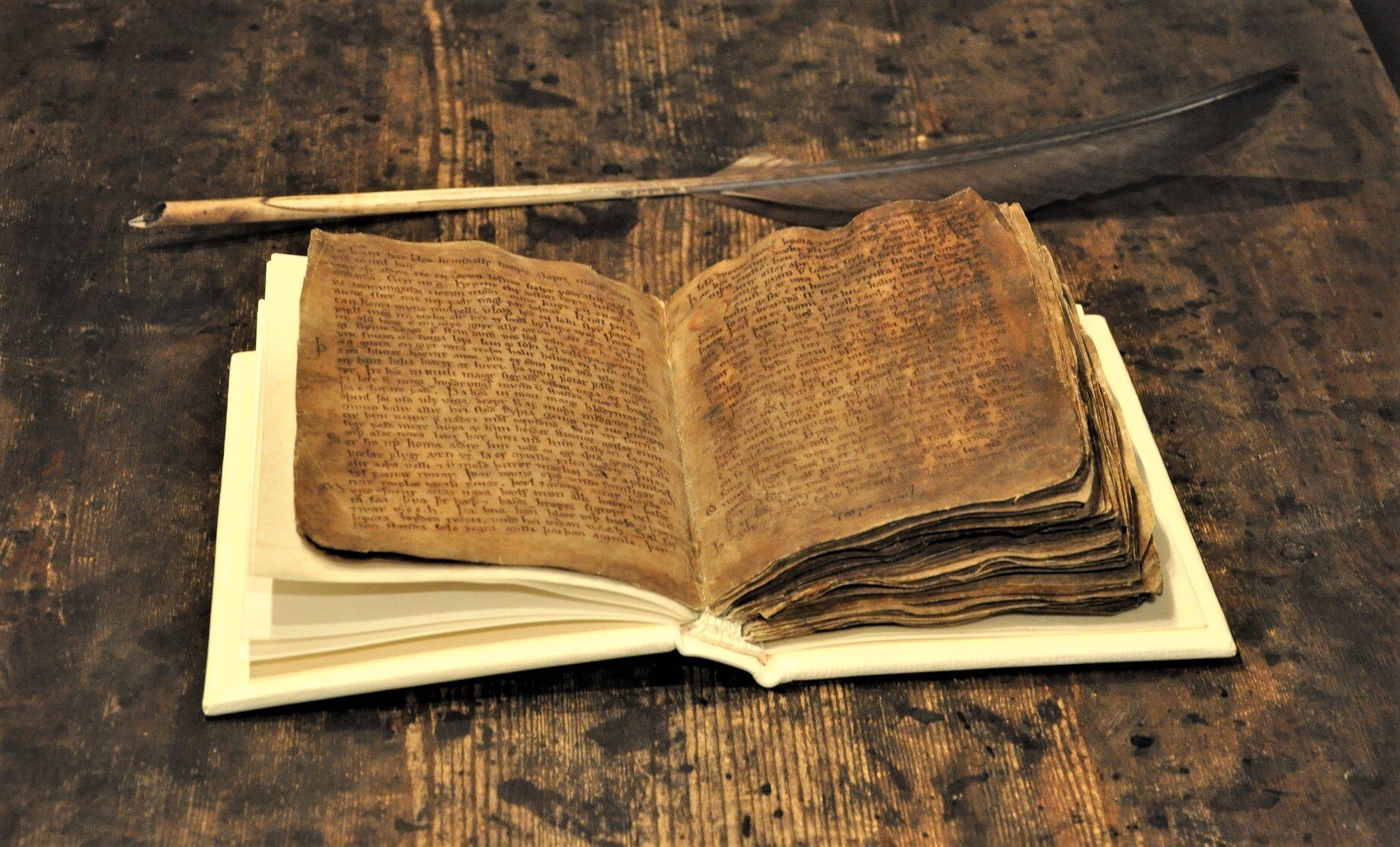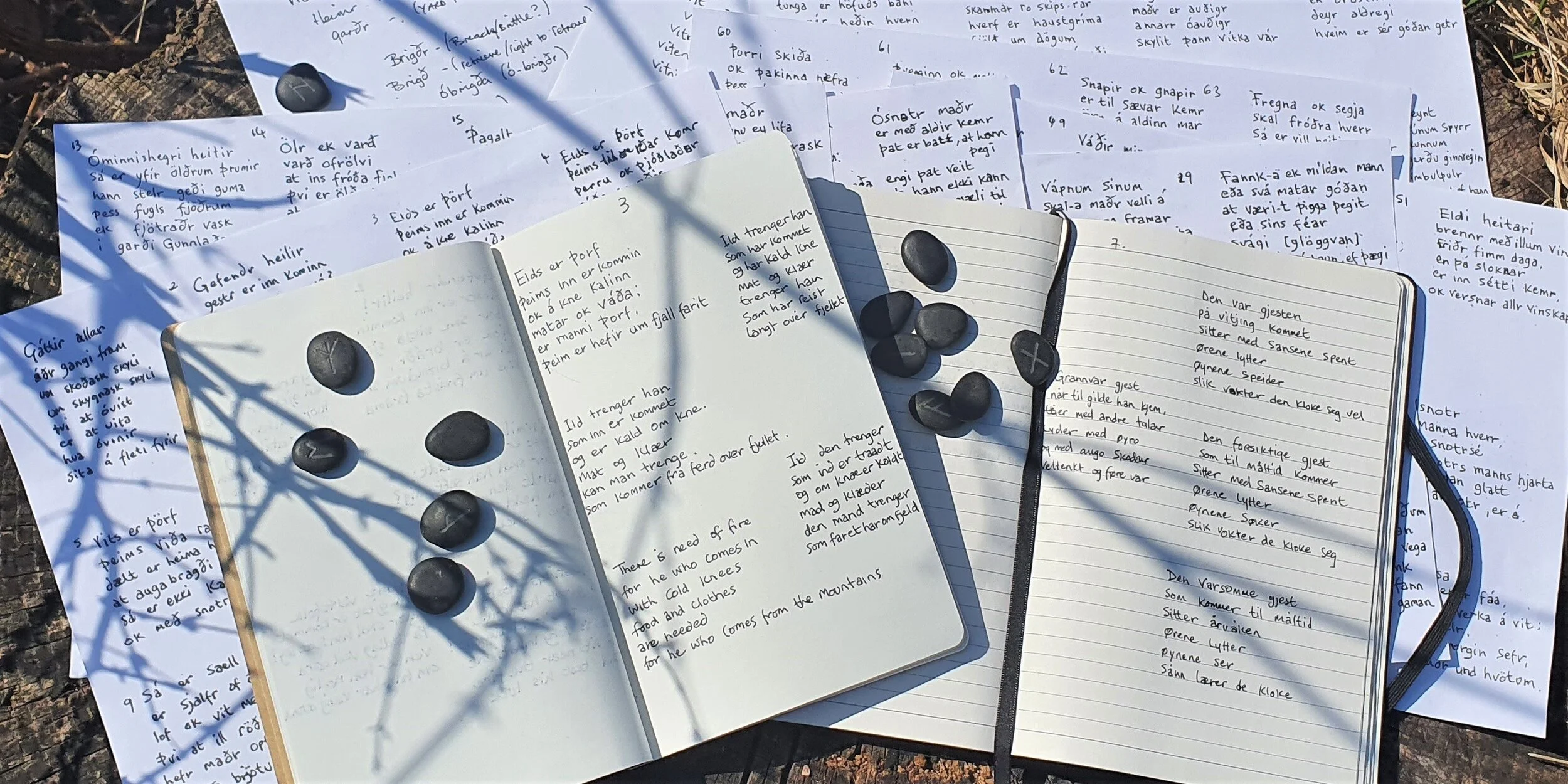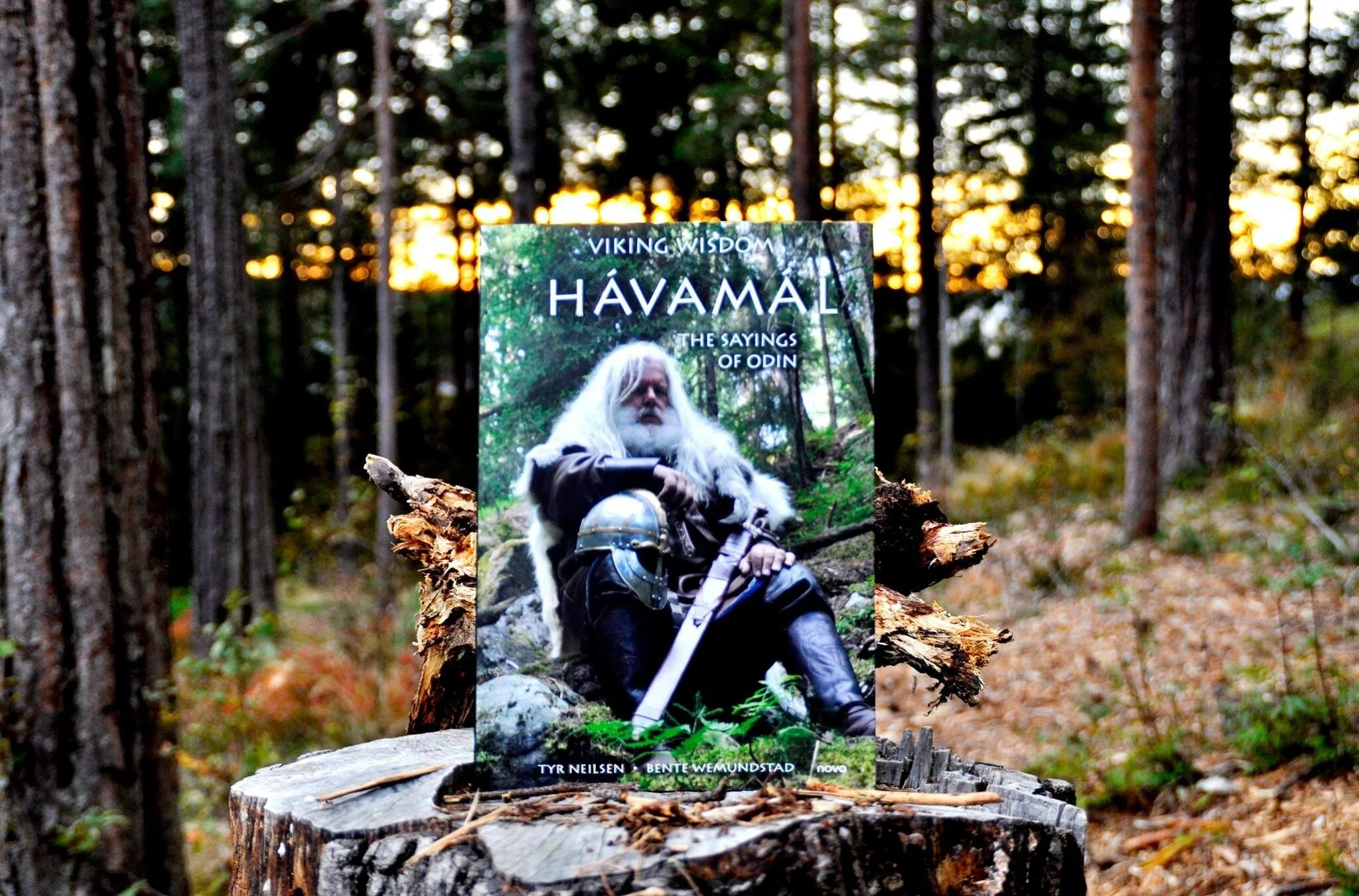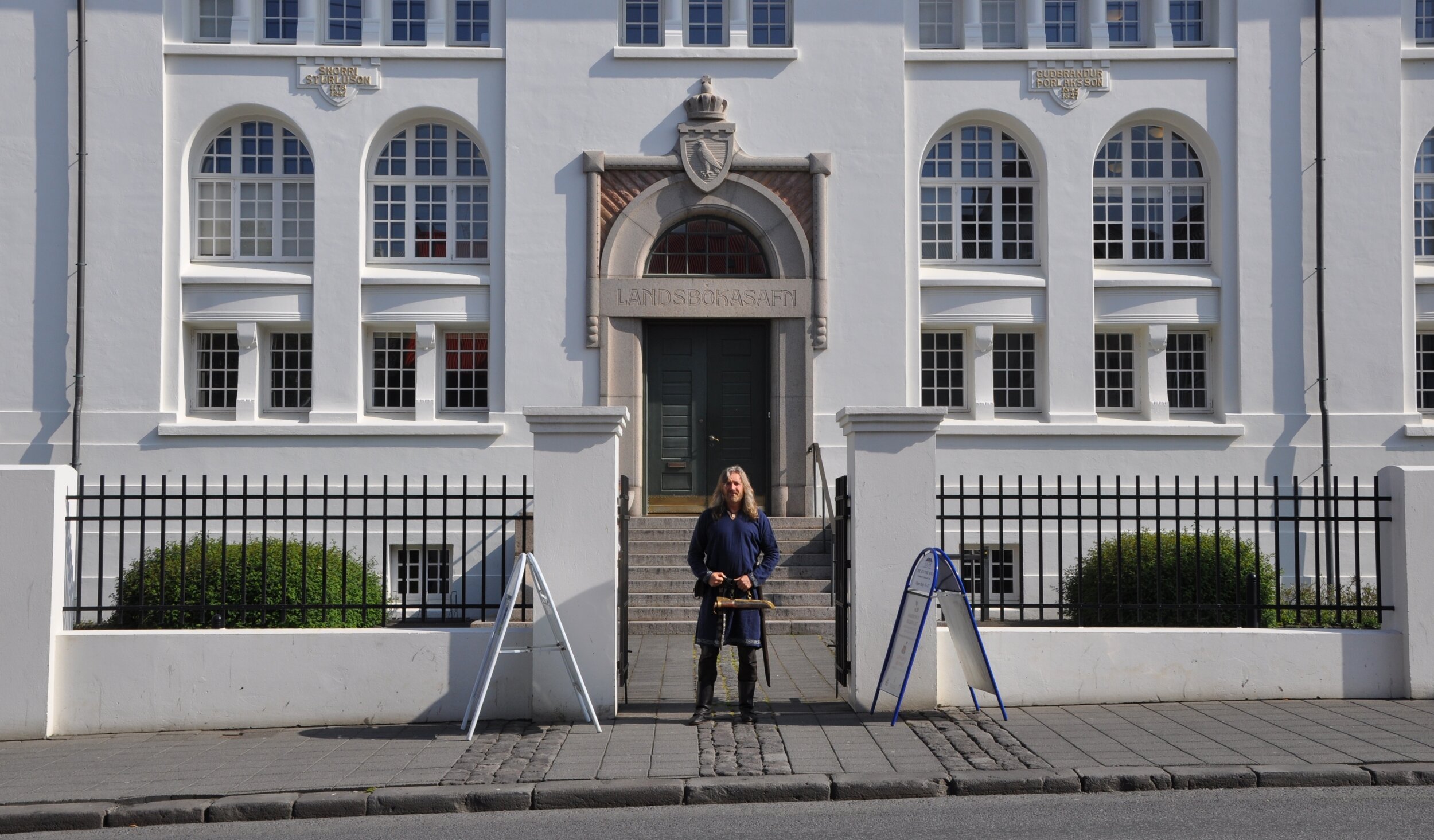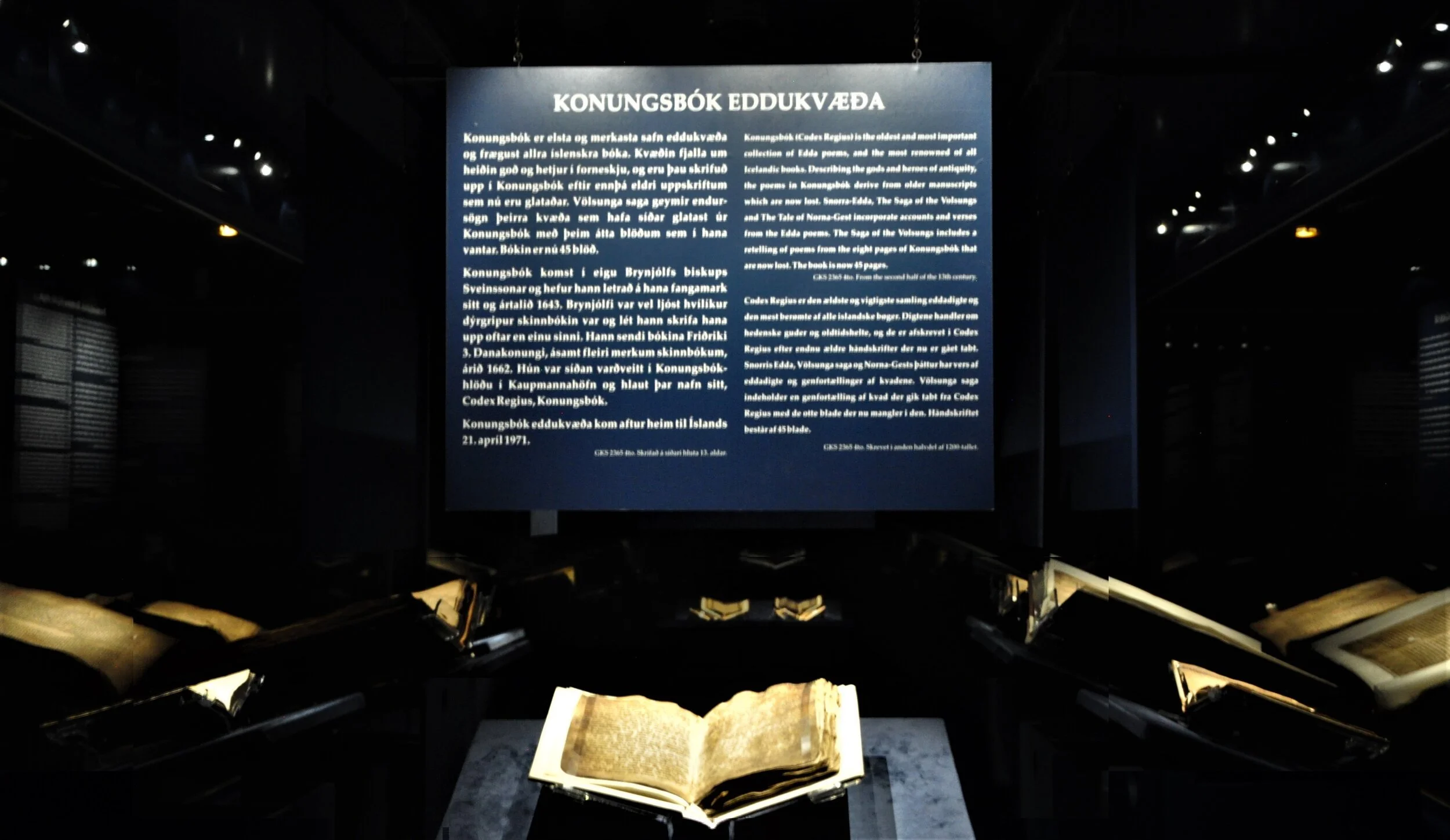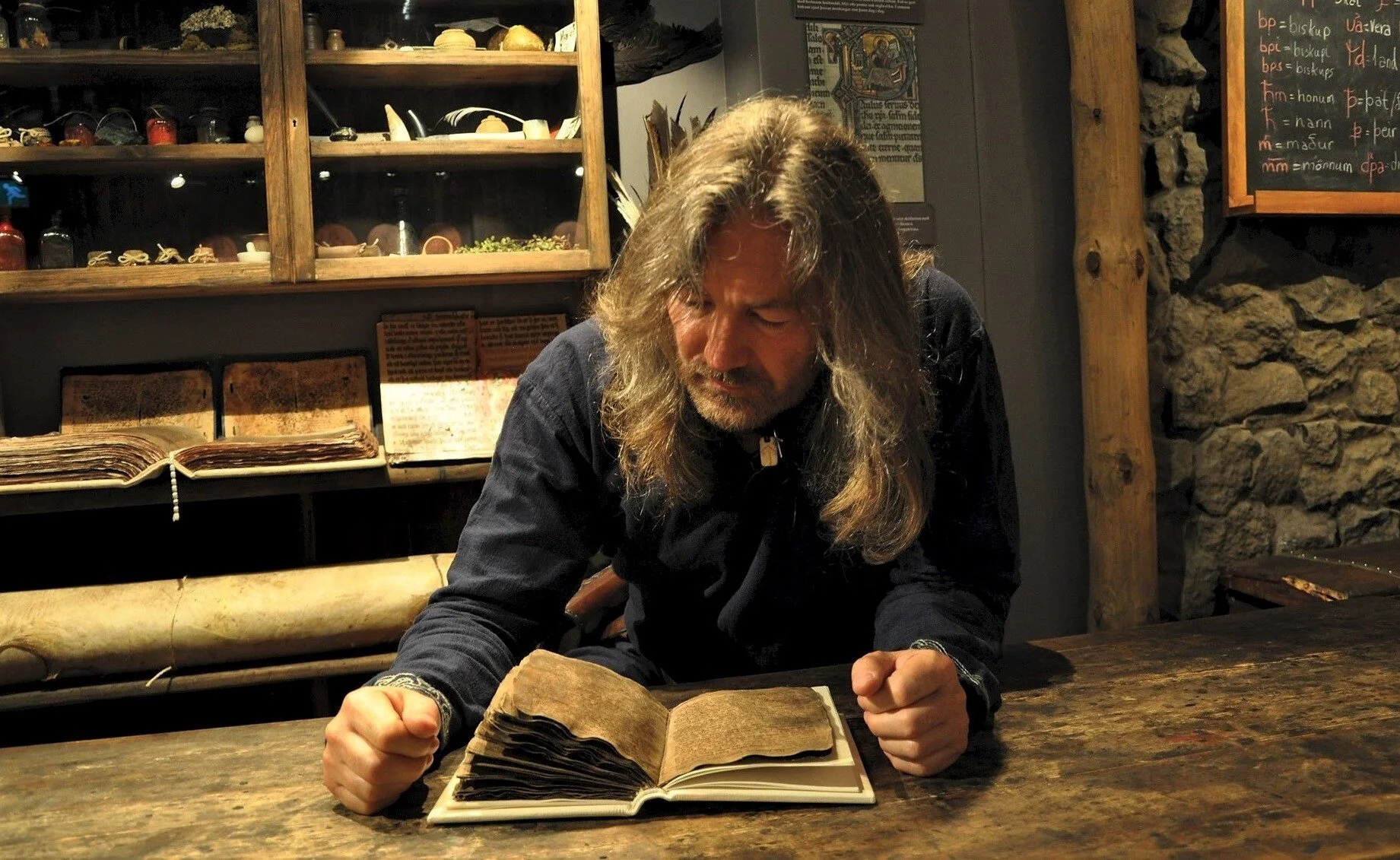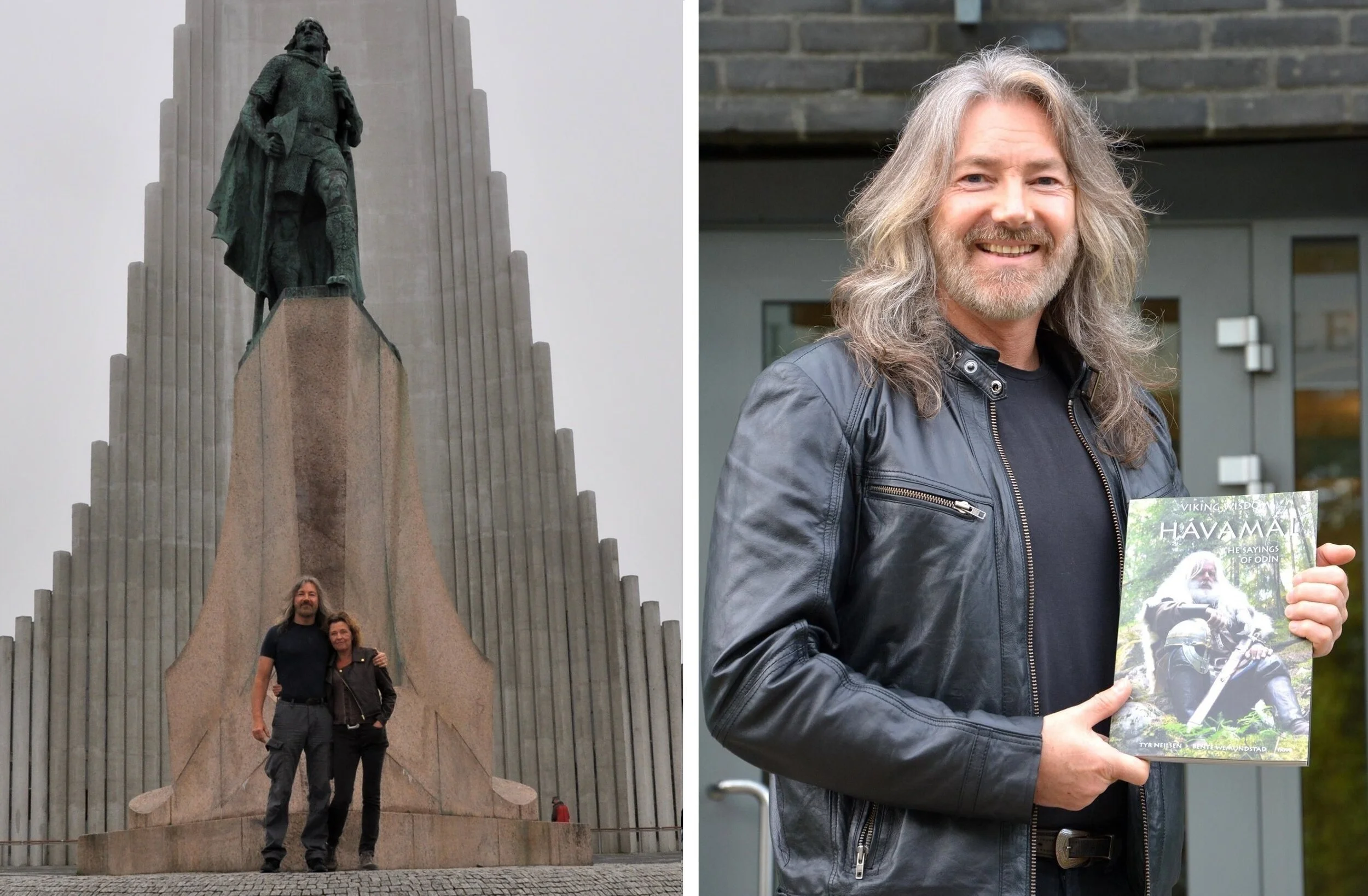Viking Wisdom - Hávamál - the Sayings of Odin by Tyr Neilsen
/I have been fascinated by Viking Age Scandinavia ever since I was a young boy. As a man, I was lucky enough to marry a Norwegian woman whose parents were knowledgeable in their rich cultural heritage.
My father-in-law Odd Svendsen introduced me to the Viking martial art of Laustak, and my mother-in-law Gudlaug Foss Svendsen gave me insight into Norse mythology, spirituality and philosophy, with special focus on Hávamál.
Hávamál in Old Norse means ‘Odin’s speech’ or ‘the sayings of the high one’. It is part of a 13th century manuscript that documents early Norse cultural ethics, making it one of the most important texts from Viking Age Scandinavia.
ORIGINAL HÁVAMÁL MANUSCRIPT FROM THE 13TH CENTURY
Gudlaug grew up in a time when there were very few Hávamál translations, and the ones available to her in Norway were in Nynorsk, a second form of the Norwegian language. Through the years, Gudlaug had translated all the verses of Hávamál into standard Norwegian for her own use and understanding.
After many discussions about Hávamál and the levels of interpretation, Gudlaug suggested that I translate Hávamál into my native language English, in order for me to fully comprehend it.
Thanks to Gudlaug’s encouragement, I continually translated and reinterpreted Hávamál. My path to philosophy had initially been through martial arts, so sometimes I wrote a translation in a warrior mindset, other times I wrote it in a more spiritual mindset, and for my young son, I interpreted Hávamál in a way that was easy for him to understand.
WORKING ON HÁVAMÁL VERSES THROUGHOUT THE YEARS IN OLD NORSE, NORWEGIAN AND ENGLISH
When journalist Bente Wemundstad interviewed me for a local newspaper, Byavisa Drammen, we talked about all things ‘Viking’, including Old Norse philosophy. When the interview was over, Bente said that she was fascinated with the way I had used Hávamál verses to add a perspective or understanding to different Viking themes.
She told me that she had first heard about Hávamál at school, but felt the lessons were dry and academic, and hadn’t gotten much out of it, but now she was intrigued and would buy a book with a Norwegian translation of Hávamál.
A few days after the interview, Bente called to tell me that she had tried without luck to find a Hávamál book translated into standard Norwegian, and thought there was a market for one. She asked if I was interested in co-writing a Hávamál book in Norwegian that would be easy for most Norwegians to understand.
Bente wanted to use my latest English translation as a starting point, so that we could create a Norwegian version whose purpose was to make the Vikings wisdom accessible to the modern reader.
At our first meeting, we agreed to translate into an easily understandable read, the first 80 Hávamál verses, which deal with ethical conduct. We also agreed that the book needed to include a historical backstory to give perspective, that it should contain information about Odin, as the verses are attributed to him, and that the verses would be in Old Norse as well as Norwegian.
When I described how the original Hávamál was delivered as a performance in the Viking Age, Bente said that she wanted to replicate this by illustrating the book with photographs of ‘modern Vikings’. This was something that had not been done before and I liked the idea. I quickly realised there would be more to this book than just translating Hávamál verses into understandable modern language.
Using a few of our Hávamál verses translated into modern Norwegian, Bente and I made a presentation of how the book could look, which was then sent to several publishing companies. Within hours we had several publishers interested, and after a few telephone conversations, Bente told me that this book was absolutely something Nova publishing wanted. In our first meeting with Nova, we were told that not only did they want to publish this Hávamál book with our Norwegian translation, they also wanted to publish a version with an English translation.
OUTSIDE LANDSBOKASAFN - THE NATIONAL LIBRARY OF ICELAND
After agreeing to a deadline and signing a contract, Bente and I figured out a plan of action. Together we continued translating the first 80 Hávamál verses into standard Norwegian, using my English tranlation as a template. Seperately, I pieced together my research about the history of the original Hávamál manuscript, as Bente wrote about Odin and other Norse gods, and found and photographed Viking reenactors and people she thought would be good candidates to portray them.
The only surviving source for Hávamál, is a 13th century manuscript called the Codex Regius, held in a hermetically sealed safe at the Árni Magnússon Institute in Reykjavik, the capital of Iceland. Whilst checking Hávamál details with the institute, I found out that the original Hávamál manuscript would be on display for a short time at the National Library of Iceland.
tHE 13th century manuscript ‘Codex Regius’ - “Konungsbók” - "King's Book"
Bente and I contacted the curators of the exhibition about our project and were invited to the library for exclusive access to the original Hávamál manuscript. This exclusive access could only happen for a few hours just a few days later, so we had to move fast. This was an amazing opportunity that could not be missed so Bente and I did everything we could to get there in time.
Some few hours after landing in Iceland, we were doing a photoshoot in a private library room with the original Hávamál manuscript. There were strict rules we had to obey regarding photography. There could be no use of a flash, there could be no photographs from directly above the Hávamál manuscript pages, and there were only a certain number of pages we could photograph.
EXCLUSIVE PHOTO OF TYR NEILSEN WITH THE ORIGINAL HÁVAMÁL MANUSCRIPT FROM THE YEAR 1270
The time went by incredibly quickly, but with the help of library curators, we were able to get the most important shots, before the Hávamál manuscript was placed inside a glass container as main attraction of the libary’s exhibition, only minutes before the eager public began entering the building.
After spending years researching and translating Hávamál for my own personal growth, I had not only held the original manuscript in my hands, but my work was printed in a book titled ‘Viking Wisdom - Hávamál - the Sayings of Odin’, with a foreword by Robert Ferguson author of ‘The Vikings’, and Gunnar Pálsson, Iceland’s Ambassador to Norway.
WITH CO-AUTHOR BENTE WEMUNDSTAD AT LEIF ERIKSON MONUMENT AT REYKJAVIK CHURCH, ICELAND AND PICKING UP BOOK ‘VIKING WISDOM - HÁVAMÁL - THE SAYINGS OF ODIN’ AT PRINTERS IN OSLO, NORWAY.
